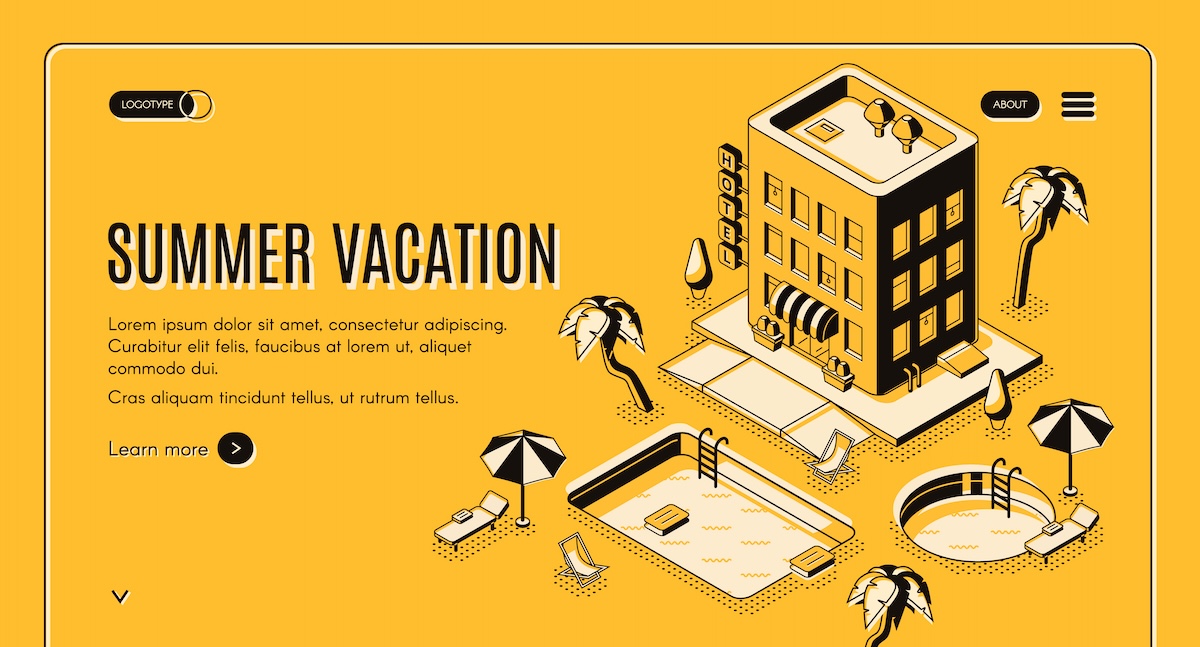You've probably heard the term "landing page" before, but maybe you're not that familiar. We aimed to help you and give you some information about this type of "page" specially created to convert visitors to your website into customers of your agency.
In the following we try to answer the main questions you might have about landing pages and how they can help you.
What is a landing page?
The landing page is actually the page where you want your customer to "land" on your website to get the maximum reaction from their first visit. The landing page is generally closely related to promotional activity either through paid advertising or SEO, and has a clear sales role. Personalized through text and images, it must turn traffic (customers who just look) into conversions (customers who buy) by putting in front exactly what you want to sell (or rather, what they want to buy).
Landing pages are really important when it comes to online travel agencies. The large number of destinations, departures, hotels, generate thousands or tens of thousands of pages in a single website, and their navigation can sometimes be very difficult for the less "specialized" customer. You can help him get where he needs to be and how he needs to through a landing page!
The wide presentation possibilities that this type of page offers you are especially important when it comes to the tourism "product", intangible until the moment of "consumption". People do not see the product, but rather buy the promise of relaxation under the terms of a given package tour, and wrapping it in a story adds magic and, why not, persuasion.
What is the purpose of a landing page?
The purpose of a landing page is to turn the visitor into a customer for a specific tourism product or destination, by "isolating" that product in a dedicated, content-rich page. In this way, you help the tourist to have a focused attention in one direction and you guide him in a virtual story that he can't wait to turn into reality.
Who needs landing pages?
All businesses, regardless of their nature, need landing pages both to be more effective in promotion and to outline their business idea better. The exercise of creating a conversion-oriented page often helps you organize your ideas and better define your business.
How effective can a landing page be?
The performance of a page will always be related to its business, niche, context, potential and expectations. Comparing the efficiency of two businesses is almost impossible due to the generally ever-changing economic conditions.
The most important thing in evaluating a landing page is how well it helps you achieve your goals. Want your page to bring in more customers for a specific destination? Analyze how many customers it brought. Do you want your page to occupy the last places left on charters? Analyze how much your last campaign achieved.
How much does a landing page cost?
Online holiday shops (or online travel agencies) built on the TravelFuse platform feature a completely free page builder functionality that can be used by any partner agency. Creativity is encouraged, so a series of templates can be created according to the taste and wishes of each company.
For inserting images, we recommend that you make sure that you do not use copyrighted images, and if you want something more special, you can try to work yourself in Canva, a very useful tool for beginners and even for the most experienced.
What does a landing page include?
You must always keep in mind that your target audience does not have the patience to analyze in depth a multitude of accommodation units or a wide range of destinations. Your role as a travel professional is to present a selection of travel products that you are sure will help the tourist have the best vacation experience and you the fewest complaints at the end of the season. A landing page helps you do that.
- The offer must be well constructed, with the most relevant details and no hidden costs. The design should preferably be as simple and clean as possible, because too many buttons or colors can distract from the things that matter.
- Insert original images or even a presentation video. Be careful though! Images must be relevant to the promoted destination and travel period. Our recommendation would be to use your own images from infotrips and travels as much as possible.
- Add positive reviews. Surely you have customers who have visited a particular resort and returned extremely satisfied. Or maybe you yourself want to recommend something from your own experiences. Any personal opinion is welcome.
- Emphasize advantages or benefits. Arguments are always needed to convince. Use your experience as a travel agent and highlight the most positive aspects.
- It provides guarantees to increase credibility. Maybe you are a member of ANAT or another association. Use every little detail and place it close to the logo to stand out.
Now that you've learned new information, use it for your next Summer Sales, Last Minute, Black Friday, Valentine's Day, New Years, etc. campaigns.
Boost to conversions!


